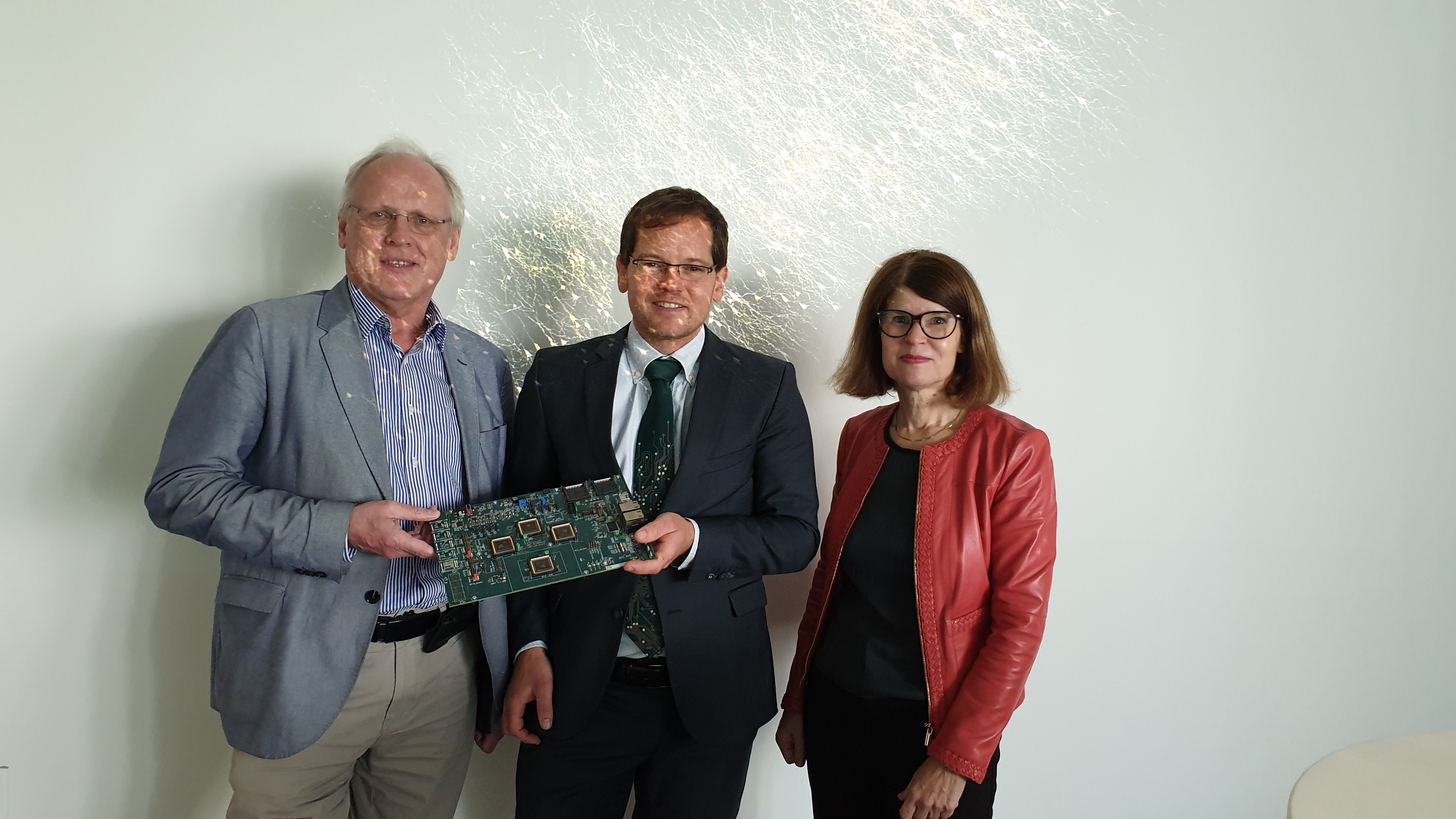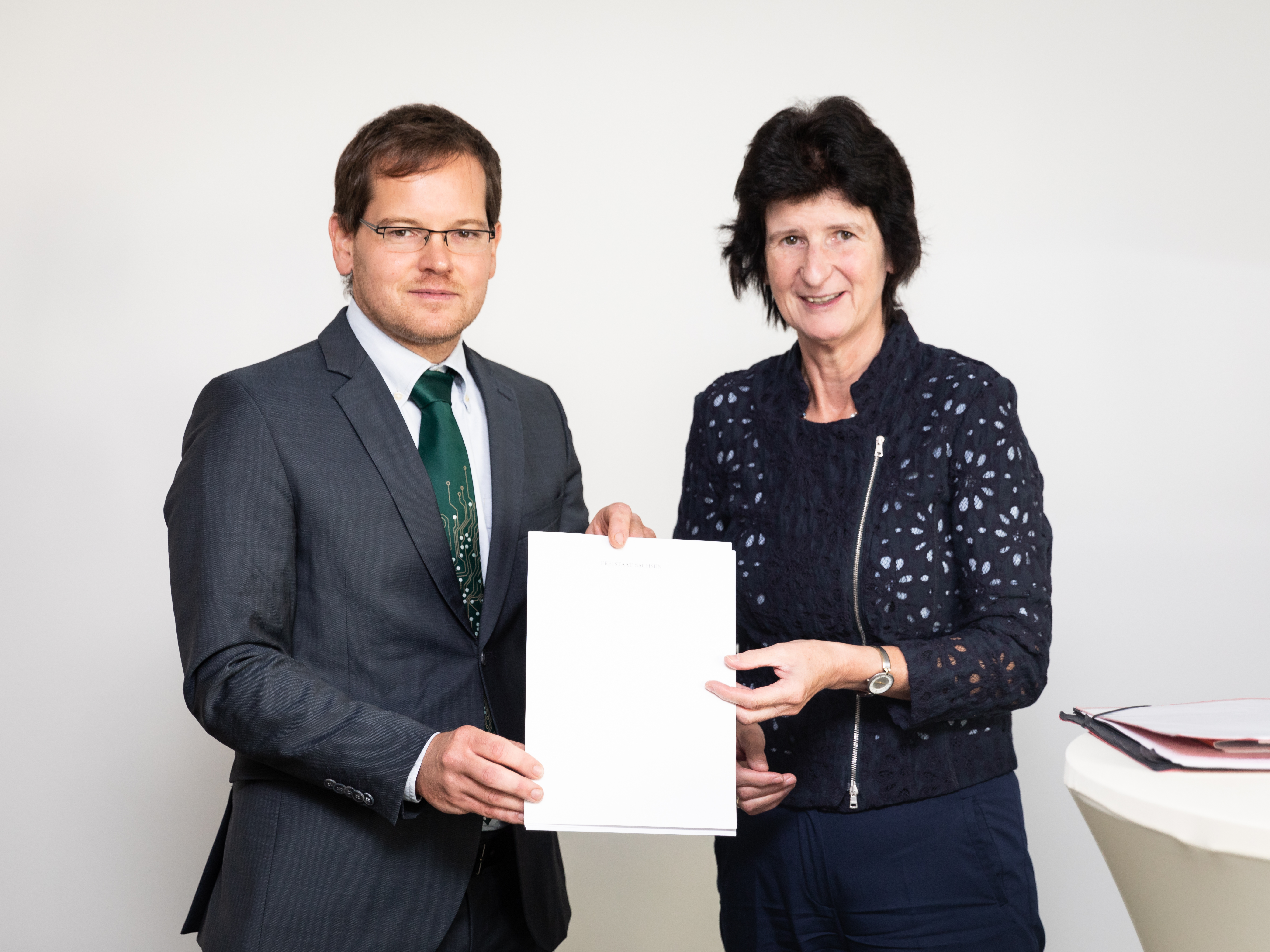Second Generation SpiNNaker Neuromorphic Supercomputer to be Built at TU Dresden
24 September 2019
Saxon Science Ministry delivers 8 Mio Euro to TU Dresden for second generation SpiNNaker machine, to be called “SpiNNcloud".
Saxon Science Ministry delivers 8 Mio Euro to TU Dresden for second generation SpiNNaker machine
Press Release, For Immediate Release

Pictured From left, Professor Steve Furber (University of Manchester), Professor Christian Mayr (TU Dresden) and Professor Katrin Amunts, Scientific Director of the Human Brain Project.
Dresden will be the site of the first super computer that can simulate brain-size networks in real time, SpiNNaker 2.
Last Friday, 20th September, Saxon State Minister for Science, Dr. Eva-Maria Stange delivered a funding letter of 8 Mio Euro to TU Dresden (recipient: Prof. Christian Mayr).SpiNNaker 2 will be deployed in Dresden as project “SpiNNcloud”.
"We expect that SpiNNcloud will open up completely new avenues of research“, emphasizes Minister Dr. Stange. "The state of Saxony thus aims at the creation of new industry jobs as well as strengthening Saxony as an international research location."
SpiNNaker2 has been developed in the Human Brain Project by TU Dresden and the University of Manchester. It continues the line of dedicated digital neuromorphic chips for brain simulation from the first generation SpiNNaker. SpiNNaker 2 will increase simulation capacity by a factor >10.
The full-scale SpiNNaker 2 will consist of 10 Mio ARM cores distributed across 70.000 Chips in 10 server racks.
SpiNNaker2 combines high-throughput machine learning, sensor/actuator processing at millisecond latency, high energy efficiency and strict real-time operation.
"With SpiNNcloud, Dresden will receive a unique research and development platform“, says Professor Christian Mayr, head of the Chair for Highly-Parallel VLSI Systems and Neuromicroelectronics at TU Dresden.
"AI is a very hot topic in the research landscape in Saxony. The new excellency cluster CeTI (Center for Tactile Internet) at TU Dresden does cutting-edge research in interactive robotics, and I expect them to be one of the main users of SpiNNcloud. Also, local industry, such as the Infineon AI center, have expressed a strong interest. Overall, we expect to spend about 60 to 70 percent of machine time with local AI initiatives and related research projects.“
“AI is having a rapidly increasing impact on all of our lives, but there is still a great deal to learn from biology if we are to realise the full potential of AI in the future,” says Steve Furber of the University of Manchester, inventor of the SpiNNaker chip architecture. “SpiNNaker2 has been designed to bridge the gulf between realistic brain models and AI so that each may increasingly be informed by the other, creating the synergy that is vital for progress on both research frontiers,” he says.

Pictured holding the letter of grant, Saxon State Minister for Science, Dr. Eva-Maria Stange (right) and Prof. Christian Mayr of TU Dresden, (left)
Further information for journalists
Prof. Dr.-Ing. habil. Christian Mayr
Technische Universität Dresden
Faculty of Electrical Engineering and Information Technology
Institute of Circuits and Systems
Chair of Highly-Parallel VLSI-Systems and Neuromicroelectronics
E-Mail: christian.mayr@tu-dresden.de



